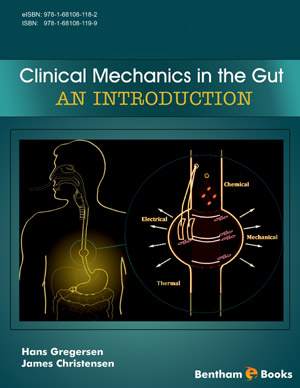Abstract
A number of factors affect neuromuscular function in the gastrointestinal tract and so act upon the transport of material. The intrinsic properties of the muscle account for the mechanics. These properties of the muscle itself establish the relationships between length, tension and velocity. This chapter deals primarily with the tissue properties, both active and passive, of the gastrointestinal wall. It seems obvious that the passive properties are related to non-contractile elements where the active properties are due to the contraction of the smooth muscle cells. Hill’s three-element model explains the active and passive elements in the wall and their interaction.
Keywords: Connective tissue, gastrointestinal muscle, Hill´s model, large intestine, oesophagus, passive properties, small intestine, sphincters, stomach, zero-stress state.

















